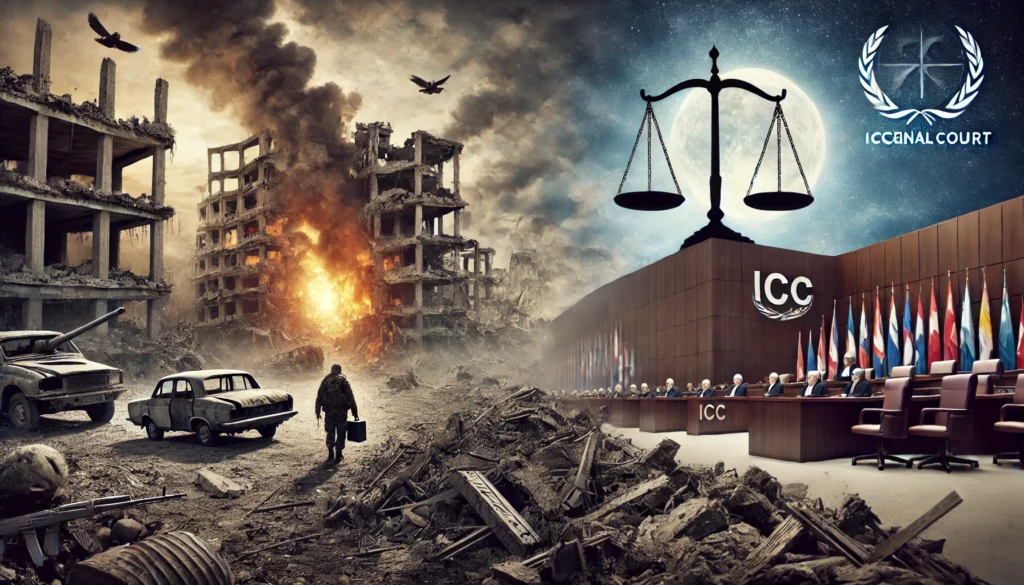Published On: 30th August, 2024
AUTHORED BY: SONIA ATTRI
UNIVERSITY OF DELHI
Mohd. Ahmed Khan vs Shah Bano Begum and Ors.
1985 AIR 945, 1985 SCR (3) 844
Bench:
Chandrachud, Y.V. ((Cj), Desai, D.A., Reddy, O. Chinnappa (J), Venkataramiah, E.S. (J), Misra
Rangnath
INTRODUCTION
Shah Bano, a 72-year-old Muslim woman with five kids was kicked out of her matrimonial home by her husband when he married another woman, Her husband paid her maintenance for 2 years and then stopped payments. She petitioned the court to get maintenance beyond this time frame under the CrPC. The entire case gained attention, with right-wing Hindu nationalist groups inserting themselves into the conflict between Muslim fundamentalists and women’s rights organisations, ultimately turning the fight for women’s rights into a domestic dispute between two houses of religious dogma. Some sections of society have faced brutality from time immemorial, Women are one such segment. “Nastree Swatantramarhati” said Manu, the lawgiver: Women do not deserve independence. The case of “Shah bano begum,” which dealt with the issue of maintenance to aggrieved Muslim women under Section 125 CrPC, is a fight against stereotypes and upholds the constitutional value of “Equality.” All other issues in this case are of common interest, not only to Muslim women but to all those who aspire to create an equal society for both men and women and people who want remarkable progress in this direction.[1]
FACTS
In 1932, Mohd. Ahmed Khan (Appellant), a professional barrister, wed Shah Bano Begum (Respondent). That marriage produced three sons and two daughters. The respondent was ejected from the married residence by the appellant in 1975. As permitted by Islamic law, the husband had remarried throughout this period and had children from both marriages. They were living with Shah Bano. After being evicted from their marital residence in 1975, Bano petitioned for Rs. 500 in maintenance under Section 125 of the CrPC in the learnt Judicial Magistrate (First Class) court in Indore in 1978. In 1978, she received a triple talaq (talaq-ul-biddat) divorce from Mohammad Ahmed Khan.
In August 1979, the Magistrate ruled in favour of Bano, awarding him a meagre Rs. 25 in contrast to his claimed annual income of Rs. 60000. The High Court of Madhya Pradesh later enhanced this amount to Rs. 179.20 when Bano signed a revisional plea. Mohammad Ahmed Khan, a practising counsel, filed an appeal with the Supreme Court in spite of the paltry amount that was granted to her.
ISSUE
The Supreme Court articulately framed the agonizing[3][4] issues before it:
- Is Sec 125 of CrPC a secular provision?
- Does the Muslim Personal Law contain any provisions stating that the woman will receive a certain amount “on divorce”?
- Is the law so ruthless in its equality that, no matter how much the husband pays for the maintenance of his divorced wife during the period of iddat absolves him forever from the duty of paying adequately so as to enable her to keep her body and soul together?
Arguments advanced
Arguments of Appellant
1) Shah Bano had ceased to be Mohammad Ahmed Khan’s wife due to the divorce given to her.
2) According to the Sharia law, he was only supposed to provide her maintenance for the iddat period.
3) “During the iddat period, he deposited Rs. 3,000 in the court as dower and had previously paid maintenance to her at a rate of Rs. 200 per month for approximately two years.”
4) The marriage and divorce were to be governed by Muslim personal laws, over the CrPC.
5) Respondent’s claim is not maintainable under Section 127(3)(b).
Arguments of Respondent
1) In accordance with Section 125 of the CrPC, a man of wealth is expected to support his divorced wife and their children until she remarries if she is unable to support herself.
2) Her ex-husband would be liable to provide her with maintenance under this provision, as she had no ability to maintain herself.
JUDGEMENT[7]
The Chief Justice Chandrachud delivered the verdict in the Shah Bano case.
- YV Chandrachud had clearly identified the case as an issue of gender inequality in the very first sentence of the judgement delivered by him: “This appeal, arising out of an application filed by a divorced Muslim woman for maintenance under Section 125 of the CrPC, raises a straightforward issue which is of common interest not only to Muslim women, not only to women generally but, to all those who, aspiring to create an equal society of men and women, lure themselves into the belief that mankind has achieved a remarkable degree of progress in that direction.”
- The law on both sides was cut and dried. The Shariat clearly stated that a Muslim man, who had the freedom to divorce his wife whenever he pleased, need only maintain her for an iddat period. He was required by Section 125 to support a divorced wife for as long as she remained single.
- The Hon’ble Court after studying the Muslim Scriptures was of the opinion: “These Aiyats leave no doubt that the Quran imposes an obligation on the Muslim husband to make provision for or to provide maintenance to the divorced wife.”
- The Supreme Court in the present case quoted Bai Tahira v. Ali Hussain Fidaalli Chothia2 and Fuzlunbi v. K. Khader Vali3 as these decisions took the view that the divorced Muslim wife is entitled to apply for maintenance under Section 125. The Supreme Court further explained a mistake in Bai Tahira’s decision by adding, “Mahr does not fall within the meaning of that provision (Section 127(3)(b) of CrPC)” because it is not payable upon divorce. According to Section 127(3)(b) of the Code, the Court believed that the payment of Mehar does not release the husband from his obligation to provide for his wife.
- Justice Sikri, in Nanak Chand v. Shri Chandra Kishore Agarwala4 pointed out that the scope of the Hindu Adoptions and Maintenance Act 1956 and that of Section 488 was different, and opined that Section 488 (of CrPC 1898) was “applicable to all persons belonging to all religions and has no relationship with the personal law of the parties”. Affirming Nayak Chand, the Court in the present case upheld that Section 488 of the CrPC 1898 is applicable to all citizens irrespective of their religion, thereby concluding that Section 125 of the Code is applicable to Muslim women.[8]
- Chandrachud chose to reaffirm the previous judgement and said that religion had no applicability to Section 125 and that the objective of the provision would be defeated if the remedy was provided to any aggrieved party on the basis of personal laws.
- Chandrachud disproved the appellant’s assertion that the respondent was untrue, citing Section 127(3)(b). He did this by stating that the divorced wife’s “amount payable” could not be mahr. When it comes to marriage, Mahr is a factor. A marriage cannot be taken into consideration when deciding to dissolve marriage.
He differentiated Bai Tahira, which had stated that mahr was included in payment on divorce, by stating that the Bench in the case did not accept mahr as such. Chandrachud expressed concern for the fervent efforts made by some to undermine a defenceless woman’s maintenance claim, pointing out that the Muslim Board’s “simple arguments” even went so far as to suggest that it is unimportant to ask how a Muslim divorcee should support herself. He recommended that a common civil code be implemented and that Muslim law has to adapt to the current circumstances.
- This conversation has led to the conclusion that, when it comes to the Muslim husband’s duty to support a divorced wife who is unable to support herself, there is no conflict between Section 125 and the Muslim Personal Law.”[9][10][11]
CRITICAL ANALYSIS
The judge’s reasoning is explicitly stated in the ruling itself, however, some people may see Chandrachud’s attempt to harmonise Muslim personal law with the CrPC in the second problem to be overly ambitious. Despite having the best of intentions, Chandrachud’s endeavour appeared to incite demonstrations within the Muslim community. The most significant reaction to this ruling was the drawing of boundaries between Muslim sects as well as between Hindus and Muslims. Conservative Muslim theologists opposed the verdict while liberal Muslims, Hindus and feminists supported it. Nonetheless, the court justified its interventionist attitude in a theological matter by citing the Uniform Civil Code’s lack of legislation. It is beyond the resilience of delicate minds to permit injustice to exist when it is so evident, so the courts must take on the role of reformer. However, haphazard attempts by courts to reconcile disparate personal laws cannot replace a common civil law.
Conclusion
Shah Bano’s fight for equal rights is representative of a culture still ruled by rigid, patriarchal ideas. She demanded that she be accorded the same rights and freedoms as other Indian citizens. The Government, however, failed to protect her rights. This judgement, and its bloody aftermath, led to clashes between many groups which led to many believing that it was time to move from a palliative principle to a progressive one. The Uniform Civil Code may be the only thing that pulls us out of this hotbed of religious strife we have managed to land ourselves in. It was draughted by impartial parties who neither wished to turn the nation into a Hindutva-centric dystopia nor wanted to cling to the antiquated and obviously unjust principles of the past. we need to move on from fundamentalist ideas of heteronormative male superiority towards a truly egalitarian society. The Shah Bano case held great significance due to two “naked truths” that came to light during the procedures, even if the Supreme Court’s decision in the case was comparable to other maintenance cases. First, there was criticism of the spirituality of religious personal laws. Second, whether the Uniform Civil Code applies to all religions and their absurdities was questioned. According to me, this lawsuit was without any ambiguity a milestone in the judiciary as it was courageous, bold, impartial and in a true sense a unique decision.[12][
AFTERMATH
- The judgement given in the Shah Bano Case was criticized among Muslims. Because of this, the Congress government in India in 1986 passed the Muslim Women (Protection of Rights of Divorce) Act, 1986 into law. This law was enacted primarily to safeguard the legal status of Muslim women who have obtained a divorce from their husbands. In addition, the woman has the right to her “Mahr” or “dower,” as well as any and all property or estate given to her by her parents, friends, relatives, husband, or friends of her husband.
- It also provided for Muslim women to receive a large, one-time payment from their husbands during the period of iddat, instead of a maximum monthly payment of ₹500 an upper limit which has since been removed.
- The case again spurred the debate on the Uniform Civil Code in India.
- The validity of the Muslim Women Act was challenged in Danial Latifi & Anr v. Union Of India5 which in a nutshell provided that the husband provide maintenance till the wife remarries and not just limit it to the iddat period.
- Later, Shah Bano herself withdrew her maintenance claim after intense pressure from her community. She was forced to choose between being a citizen and a good Muslim woman and sacrificed the former to hold on to the latter epithet.[14][15]
REFERENCES
- Vidhi Chetnani, Case Analysis of Mohd. Ahmed Khan v. Shah Bano Begum, 6.
- Ambika Gupta, Mohammed Ahmed Khan v. Shah Bano Begum, 2.
- Ambika Gupta, Mohammed Ahmed Khan v. Shah Bano Begum, 2.
- Mohd. Ahmed Khan vs Shah Bano Begum And Ors on 23 April 1985, (1985).
[1] MANU-SC-0194-1985-ACR.pdf.crdownload.
[2] 360_Swagata Mukhopadhyay.docx, supra note 1.
[3] 9303 (1).pdf.
[4] Evans-11-Mohd-Ahmed-Khan-v-Shah-Bana-Begum-1985-.pdf.
[5] Vidhi Chetnani, Case Analysis of Mohd. Ahmed Khan v. Shah Bano Begum, 6.
[6] Case-Commentary-shah-bano.pdf.
[7] 9303 (1).pdf, supra note 4.
[8] 6716_2016_Judgement_22-Aug-2017.pdf.
[9] MANU-SC-0194-1985-ACR.pdf.crdownload, supra note 2.
[10] ssrn-2150110.pdf.
[11] Ambika Gupta, Mohammed Ahmed Khan v. Shah Bano Begum, 2.
[12] 360_Swagata Mukhopadhyay.docx, supra note 1.
[13] Case-Analysis-Mohd.-Ahmed-Khan-v.-Shah-Bano-Begum.-By-Mayank.pdf.
[14] Case-Commentary-shah-bano.pdf, supra note 7.
[15] Gupta, supra note 12.




